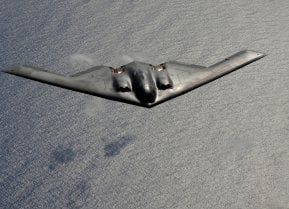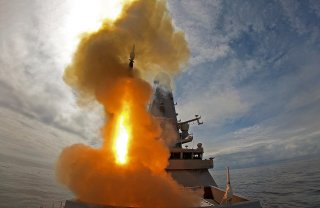Sea Viper: How the Royal Navy Plans to Shoot Down any Drone
The U.K. military decided to upgrade a critical naval air defense system responsible that has been used to shoot down Houthi suicide drones over the Red Sea. With a contract value of more than half a billion dollars, the Royal Navy is updating the Sea Viper missile.
The U.K. military decided to upgrade a critical naval air defense system responsible that has been used to shoot down Houthi suicide drones over the Red Sea.
With a contract value of more than half a billion dollars, the Royal Navy is updating the Sea Viper missile.
Sea Viper
The upgrades will include a new warhead and software updates that will enable the Sea Viper to take out ballistic missiles and other threats over 70 miles away. The Royal Navy intends to upgrade its weapon system to protect its carrier strike groups from air threats.
“We’re upgrading the Royal Navy’s drone killing missiles, which have been used decisively in the Red Sea to destroy Houthi drones,” U.K. Secretary of Defense Grant Shapps said.
“Today’s £405 million investment will upgrade their warhead and software to make Sea Viper even more lethal against new and growing threats from hostile drones and missiles,” Shapps added.
The Principal Anti-Air Missile System (PAAMS), or Sea Viper, is an integrated air defense system in service with the Royal Navy’s Type 45 destroyers, the French Navy’s Horizon-class frigates, and the Italian Navy. It is comprised of a radar, command and control system, and a vertical launching system packed with Aster (15 or 30) missiles.
The initial stage of the program will upgrade the existing Aster 30 missiles the Sea Viper system uses to Aster 30 Block 1, which allows them to take out ballistic missiles. In addition, there will be software updates to the multi-function radar and command and control system.
In the subsequent stage of the program, the Royal Navy will bring in the Aster 30 Block 1NT missile, which is currently under development among the U.K., France, and Italy. This improved version will feature a new seeker that would increase its ballistic missile defense capabilities.
The updated system will be the most advanced air defense system in the history of the Royal Navy. With two new aircraft carriers, the HMS Queen Elizabeth 2 and HMS Prince of Wales, the Royal Navy needs better air defense capabilities.
“As the situation in the Middle East worsens, it is vital that we adapt to keep the UK, our allies and partners safe. Sea Viper has been at the forefront of this, being the Navy’s weapon of choice in the first shooting down of an aerial threat in more than 30 years,” the British Secretary of Defense added.
The Royal Navy knows a thing or two about aerial threats. During the Falklands War against Argentina in 1982, the Royal Navy faced persistent attacks from Argentinian aircraft, shooting down dozens of them but also losing six ships.
“Our strong and enduring relationship with British industry has ensured we can deploy the latest technological capabilities wherever they are required while supporting hundreds of jobs across the country and bolstering UK prosperity,” Grant stated.
Operations against the Houthis in the Red Sea and Gulf of Aden continue, with more countries sending warships and aerial assets into the region to protect maritime trade and freedom of navigation.
About the Author
Stavros Atlamazoglou is a seasoned defense journalist specializing in special operations and a Hellenic Army veteran (national service with the 575th Marine Battalion and Army HQ). He holds a BA from Johns Hopkins University and an MA from the Johns Hopkins School of Advanced International Studies (SAIS). His work has been featured in Business Insider, Sandboxx, and SOFREP. Email the author: [email protected].


